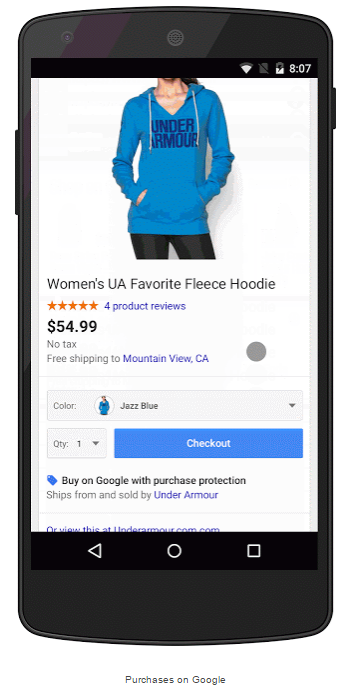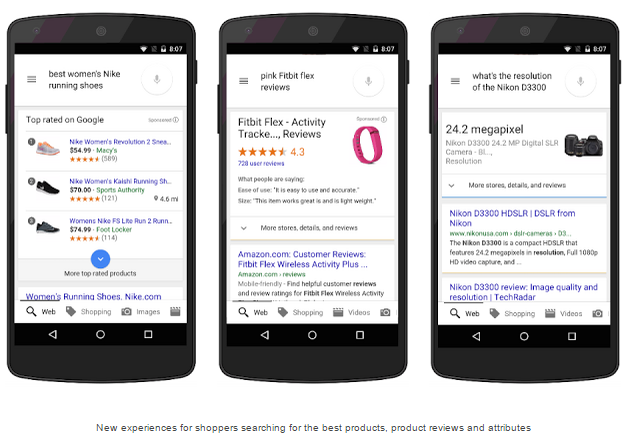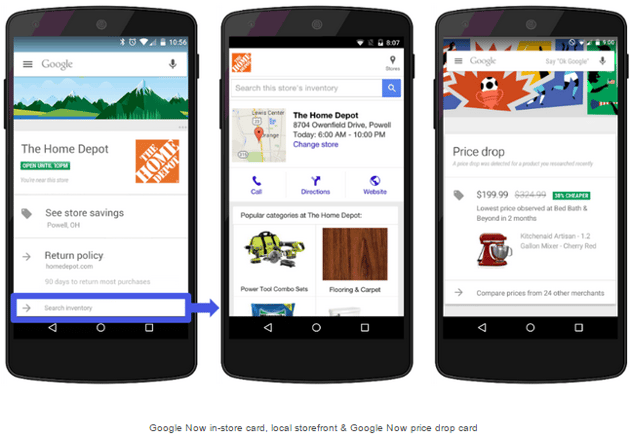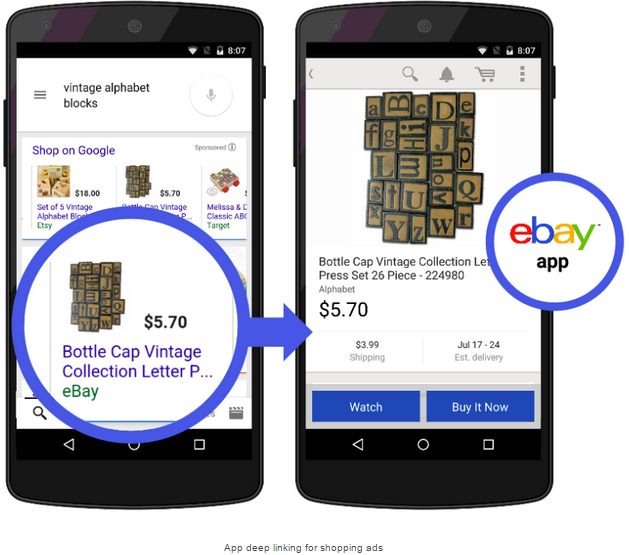What Purchases on Google" Means to Retailers"

Google has had one topic top of mind in 2015 - mobile.
Not only did the tech juggernaut recently release it "mobilegeddon" update, which makes mobile-friendliness a more significant part of how Google delivers mobile results, but it also announced a new way for mobile consumers to shop on its platform with a feature called "Purchases on Google."
Learn how Google plans to shake up mobile commerce with this feature and other shopping updates below.
What is "Purchases on Google?"
With Purchases on Google, consumers will see a "Buy on Google" call-to-action (CTA) on some shopping ads after conducting a mobile search. After clicking the ad, the consumer is taken to a retailer-branded product page hosted by Google. What's more, checkout is simple when consumers have saved payment credentials in their Google account.

What Retailers Should Know
Google data shows that U.S. retailers' conversion rates on desktop computers are 2 times higher than on mobile, but Purchases on Google can help retailers improve mobile conversions thanks to the simplified checkout process.
Through the feature, participating retailers only pay for clicks on the shopping ads to the product page, while all clicks and interactions on the product page are free. Moreover, although Google hosts the product page and provides purchase protection for customers, retailers own the customer communication and can offer the option to receive marketing and promotional messages.
It is important to note, however, that Purchases on Google is still being tested with a limited number of retailers. Although there is no official launch date yet, it is safe to say that this feature would be very helpful if opened up to all retailers before the holiday season, as Google says that the feature is a big step toward helping retailers drive more mobile conversions.
"Purchases on Google will simplify our customers' ability to search for items on Google and then buy with Staple," said Faisal Masud, executive vice president of global ecommerce, Staples, Inc. "Working with Google on this offering will make the discovery and purchase process even easier for the customers we serve, with the power of both of our companies behind it."
Helping Mobile Shoppers Research Products
In addition to Purchases on Google, the tech juggernaut unveiled a few other features that will make it easier for mobile shoppers to research products.
For instance, Google is rolling out a new enhancement that expands shopping ads as users swipe, revealing information like product ratings and availability at a nearby store. This helps answer questions for consumers who are still in the research phase, as well as provides more qualified traffic driven directly to retailers. According to Google, the feature will begin rolling out on Chrome for Android this month and will be available on iOS in the coming months.
Google is also offering new experiences that answer consumer questions. For example, searches for top-rated products will direct users to newly designed shopping ads with authoritative rankings and product ratings. According to Google, the new design has seen click-through rates increase up to 11 percent. Plus, since product queries that include "reviews" and "recommendations" are popular, Google is showing new product review cards with ratings and snippets from useful reviews around the Web.

Other Mobile Commerce Updates
Google also unveiled a few other mobile commerce updates. For starters, the company will begin displaying more local inventory ads (LIA). These ads were launched in 2013 to show shoppers when the product they want is available at a nearby store. After seeing positive results from this ad format, Google will be showing more of these ads by prioritizing LIA over shopping ads on local intent queries. According to Google, this new experience increased clicks on shopping ads by 85 percent.
Additionally, Google Now has been updated with two new cards for shoppers. The Google Now in-store card, for instance, appears when a shopper is near a store and displays useful information like sales, closing hours, loyalty card data and more. If the consumer clicks "search store inventory," a Google-hosted retailer-branded local storefront will enable him or her to browse that store's shelves. In addition, a new Google Now price drop card highlights significant price reduction on products the shopper has previously browsed, which can impact the consumer's purchasing decision, whether online or in-store.

Lastly, Google is working with retailers to encourage mobile shoppers to use shopping apps. The company is doing this by working with retailers like eBay, Flipkart and Zalando to add deep links to shopping ads that direct consumers to the retailer's app. According to Google, this functionality will be expanding to more advertisers in the coming months.

The Future of Commerce
It is clear to see that mobile presents many opportunities to retailers, and Google is focused on unlocking some of these opportunities. Retailers who embrace these new technologies and tools will be better equipped to serve their customers now and into the future.







